Sourdough Starter: Kaelin is also founder of Real Bread Alberta
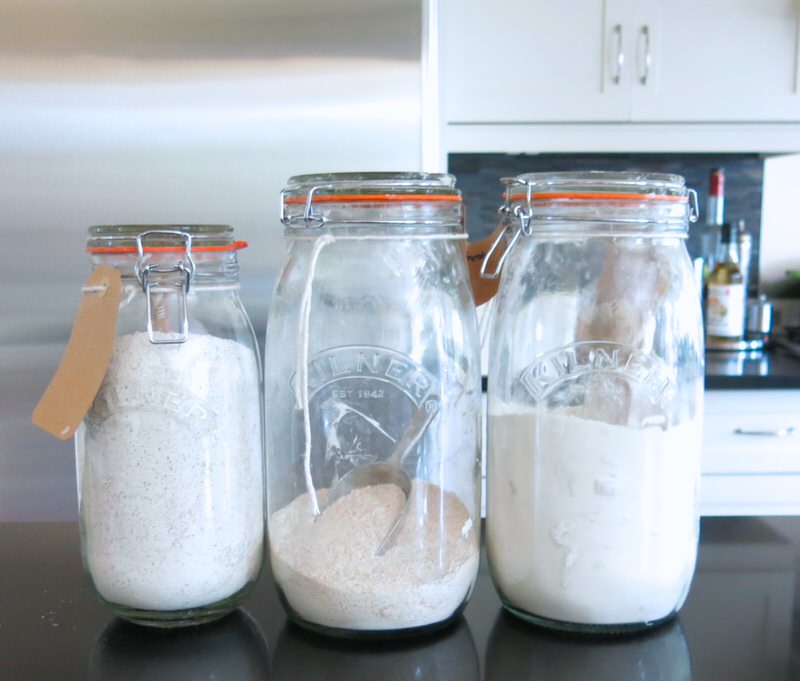
It will take 7-10 days until your sourdough starter is active. Don’t expect learning how to make Sourdough bread to be remotely similar to any other bread making you have engaged in. Be prepared for the process to unfold before you. You will make mistakes. You will become frustrated. You will learn so very much more than you ever imagined possible. Then, one day, you will wake up, and it will be easy. So easy.
Kind of like driving a car. You can’t talk. You get nervous. Your focus is intense, and sometimes you miss things. Getting to know your sourdough starter and developing that rhythm that is so necessary to integrate into your life as a maker of sourdough bread is all part of the change and the process. And the reward? Well, can you imagine life without your car? Most of us cannot. That would be like life without Sourdough bread.
It takes passion, commitment, a love of great bread and good food and a high degree of perseverance. It also takes a great mentor or coach. Kaelin Whittaker has been mine. Not only has she been my coach, she was my inspiration and my hand-holder throughout this entire process.
Talk about a positive attitude. This gal arrives with a fresh contagious smile and a truck load of enthusiasm You cannot help but be affected by her. I have always been a lover of bread making. I am an Alberta gal, after all. I cherish my life-changing day with Richard Bertinet in Bath, UK and my reaffirming day with Chef Walters at Le Cordon Blue Bread Making Atelier in Paris.
And have made a many successful gorgeous loaves in my time in my own little Alberta Prairie Kitchen.
I did learn how to make a German Brown Bread sourdough rye loaf that is phenomenal. However, I have never understood sourdough bread. Now, is the time. Kaelin has offered her expertise, and I am never one to refuse a learning experience by one with passion and ability.
So, it started. In June a few months ago. With a lovely visit and a short moment setting up my starter, heretofore to be known as “The Whittaker”. Apparently, it is custom to name one’s starter and I thought it appropriate to name mine after my mentor. Plus, it is a very noble and capable sounding name, don’t you agree?
Sourdough Starter: Introducing Kaelin Whittaker owner of The Ruby Apron and Founder of Real Bread Alberta
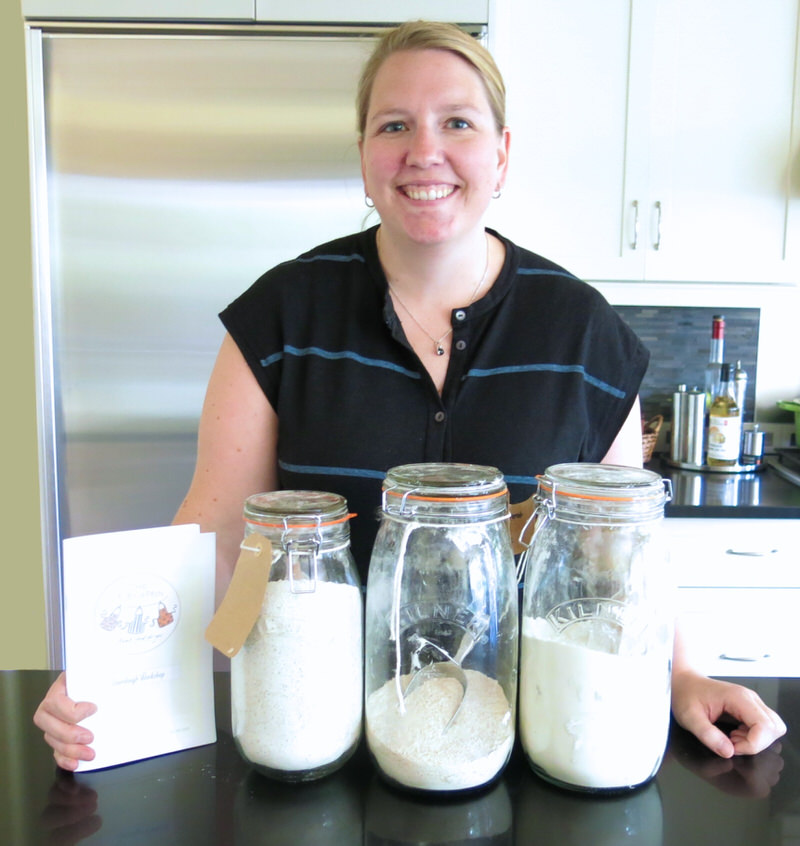
Kaelin Whittaker is an unforgettable presence sparkling positivity, passion and espousing Sourdough wisdom wherever she goes. She will convert you even though you are completely unaware you are in need of her religion. As in the old classic “When Harry Met Sally”, you’ll want whatever “she is having”. Without question, she is a Ballymaloe Disciple. Without question, she is wise beyond her years. Without question, she is all in, head over heels, feet deeply planted in the mineral rich deep black earth of her Canadian Alberta home, on a sourdough bread making mission, surpassing all imaginable at full velocity with all stops pulled.
Chatting with her, I found myself invigorated and energized from what I would call “second-hand energy” gleaned from her very presence. When she left, the room was still vibrating with possibilities. I am completely smitten. Can you tell?
Kaelin travels frequently and loves to take cooking classes. The 12-week Cookery Course she took last year in Ballymaloe changed her forever. July 2014 she stopped to check out the school for 2 nights and in January 2015 booked it and August 2015 taught her own first cooking class in Edmonton. By the end of October 2015, she had started her own business. A self-described, “cocky confident bread maker” in Ireland, she couldn’t replicate the process here and became very deflated, but persisted. After 6 months and lots of research, she gave birth to her first perfect Canadian prairie sourdough loaf.
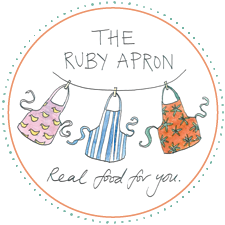 The Ruby Apron is the name of her Cooking School and pays homage to her grandmother, Ruby, while her blog is called Apron Anecdotes. Most recently, just this year (2017) she also founded “Real Bread Alberta.” This is one ambitious gal, but I think you’ve got the picture by now.
The Ruby Apron is the name of her Cooking School and pays homage to her grandmother, Ruby, while her blog is called Apron Anecdotes. Most recently, just this year (2017) she also founded “Real Bread Alberta.” This is one ambitious gal, but I think you’ve got the picture by now.
Kaelin identifies two aspects that ground her bread making: the social aspect, and that “it is such a simple way to showcase some of the issues in our food system”. Kaelin has developed global and local relationships via her bread making that have not only enriched her profession and driven her passion, but her personal life has been edified through these like-minded relationships. It’s been a win-win all round. The importance of the four simplest ingredients used in bread making: flour, water, salt and yeast cannot be understated and as she couldn’t replicate her bread making in Edmonton, her quest acquiring the best local ingredients to succeed reinforced the importance of a vibrant food system for Kaelin. The rest is her story to tell when you attend one of her classes, as it is so worth the listen.
Take a look at her Fall Class Schedule here and book a class! You will not regret it. Her classes are becoming the hottest ticket in the city! I just booked myself into one in October and cannot wait!
Kaelin’s Bread Making Heroes:
- Yves at Bonjour is doing brilliant things. Bonjour is the bakery I would go to if I didn’t make my own bread.
- Tim Allen from Ballymaloe is the bread guru who taught me a lot of what I know and planted the seed.
- Andrew Whitley from The Real Bread Campaign in the UK is doing brilliant things. He is so knowledgeable, and I think his books are the best there are out there for learning about sourdough.
- Vanessa Kimbell from The Sourdough School in the UK possesses a knowledge of the science and fermentation process behind sourdough is second to none,
- Chad Robertson of Tartine Bakery is important to mention as he is the reason the sourdough movement was brought back.
Recipes for Kaelin’s Sourdough Bread Making that are posted as part of this series:
- Sourdough Starter: Introduction Sourdough and Kaelin Whittaker
- Sourdough Sponge: Made from Homemade Sourdough Starter
- Sourdough Bread: Made from Sourdough Sponge
Sourdough Starter: Project 2017, Cooking in the Kitchen with You!
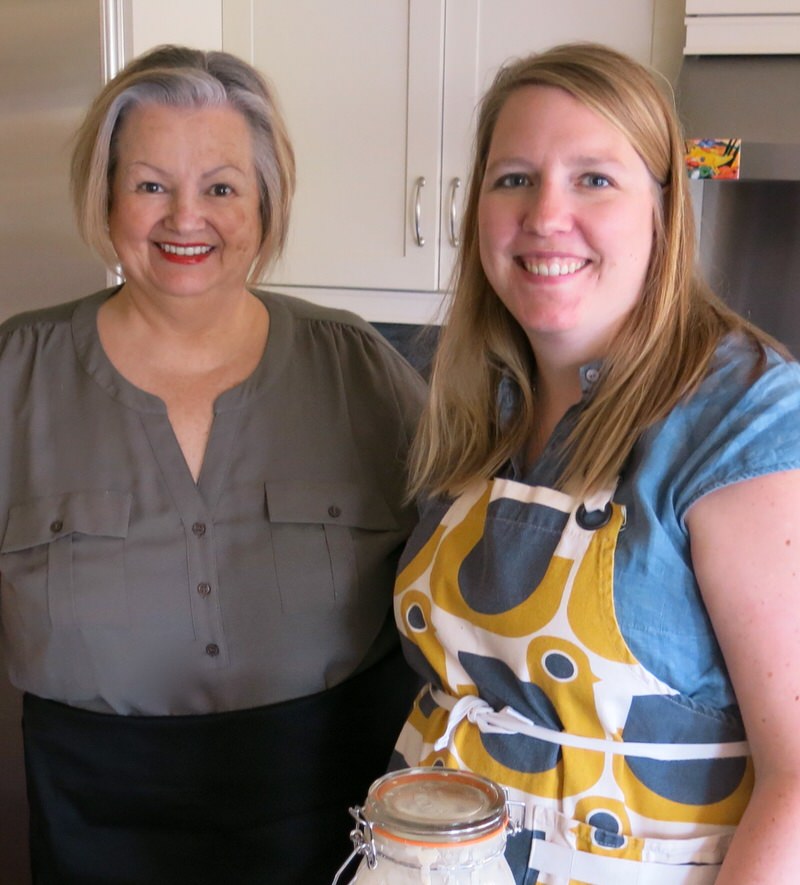
Some women like to shop or go to the spa. I love to cook in my kitchen with a friend – or someone learned who has a recipe to share, and a story to tell. Essentially, I want to glean heritage and traditional recipes – the best of the best – from our oldies and goldies that have so much experience in their heads. I want to cook with our babas and nonnas and grandmas and grandpas and learn to make what they are known for, or famous for, and share it with my readers. This is not exclusive to our elders, but definitely with them in mind. Of course, many, many younger folk, like me, for example, have much to share, as well.
#ACFValerieCookingwithYOU!
If you would like to, please let me know!
- Project 2017: Cooking in the Kitchen With… Completed Project Posts here.
- Project 2017: Cooking in the Kitchen With… Cooking Schedule is here.
- Project 2017: Cooking in the Kitchen With… PARTICIPATE!
I was already a lover of making homemade bread. I am an Alberta Prairie gal. Born and raised. Rural Grandmother baking bread regularly. Urban mother baking bread on special occasions throughout the year. Working to preserve the practices of those that have come before in my own family for those that will follow has been a passion of my own years. Learning from my mother. My grandmother. Then, Richard Bertinet with a life-changing day in his Cookery School in Bath, England… followed by a day with Chef Walters at Le Cordon Bleu Bread Making Atelier in Paris. Yeast. Flour. Water. Salt. Such magic in four of the simplest ingredients. And even more within the hand of the maker.
So, this is my – our- lucky month. Kaelin Whittaker is going to share her sourdough starter knowledge with me. And you.
Sourdough Starter: A Little Explanation, History and a note for those with Gluten Intolerance
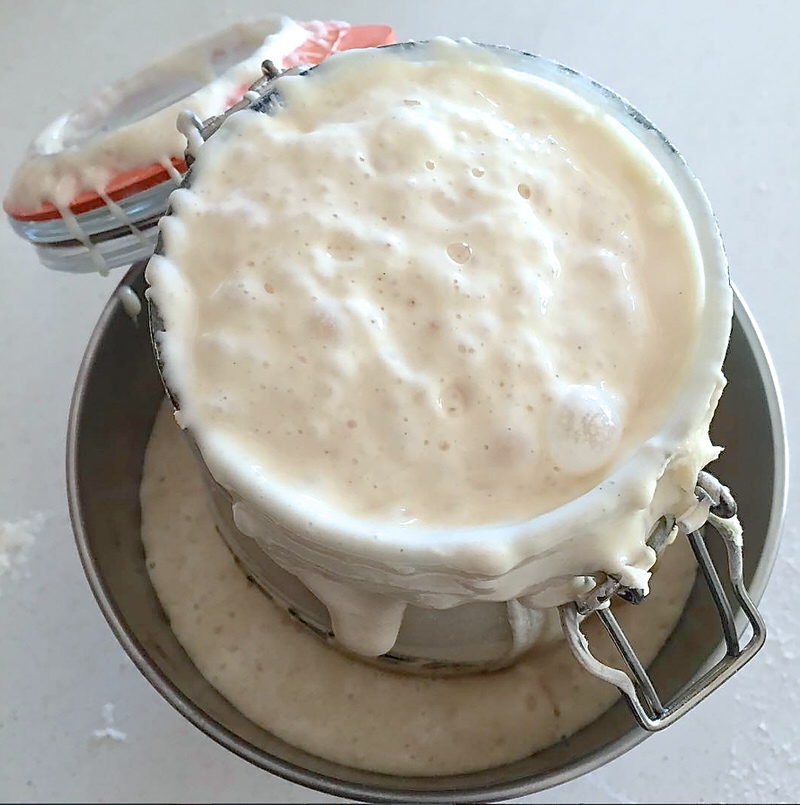
Above, a “happy starter” from Kaelin’s Instagram account, August 2017.
“Sourdough bread is made by the fermentation of dough using naturally occurring lactobacilli and yeast. Sourdough bread has a mildly sour taste not present in most bread made with baker’s yeast and better inherent keeping qualities than other bread, due to the lactic acid produced by the lactobacilli.” Wikipedia. The origin of sourdough can only be speculated, as it is seriously ancient, but what I found fascinating is that yeast bread date back less than 150 years! That leaves sourdough bread as the mother of all for “most of human history”. “One of the oldest sourdough bread dates from 3700 BCE …excavated in Switzerland”. Wikipedia.
Sourdough starter is a mixture of equal parts flour and water which, over time, creates a stable culture of lactic acid bacteria and yeast. The yeast produces carbon dioxide gas which leavens dough, and the bacteria produces acid which develops the sour flavour.
Interestingly, some sourdough does not require much gluten, therefore, those with gluten intolerance often find sourdough bread enjoyably edible. Kaelin’s recipe is high in gluten. She encourages people to stick to a white starter when learning which has more gluten, as the strength of the gluten will help as you’re learning. The fermentation process breaks down and “digests” some of the gluten which is why people who are gluten intolerant often find that they can eat a true sourdough.
Sourdough Starter: Kaelin’s Recommended Flours and Why
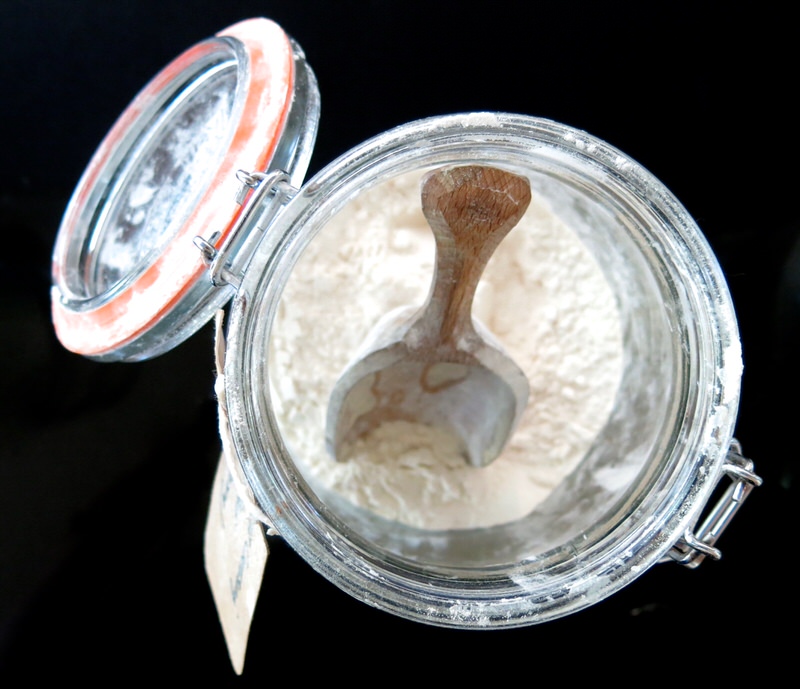
Sunnyboy flour from Camrose used to be “the’ white flour in her kitchen for most baking but she discovered it isn’t strong enough in gluten to bake good bread.
Why Gold Forest Grains Red Fife Flour: John and Cindy Schneider from Gold Forest Grains are passionate about doing it right. They a local very hard working grain farming couple who bring awareness to heritage grains, share the Slow Food philosophy and possess an incredible knowledge of soil health and organic farming. Their ethic and integrity “inspired me to use their product and I love it!” Red Fife Wheat is Canada’s oldest grain, farmed in Alberta, and had to be in the recipe.
Why High Wood Crossing Flour: it’s local, has a high protein content and is very fresh. Also, Tony and Penny Marshall are true Canadian Food Heroes and the relationships Kaelin has built with them and their staff through the process. Highwood Crossing Flour from High River is grown by Steven Snider just south of Edmonton in New Norway and processed in High River. The freshness of the flour is key, and the protein content is between 12-14%.

GFG Rye, GFG Red Fife, Unbleached HWC Flour
Driven by the smouldering embers of Ballymaloe within, Kaelin persevered for 6 months to succeed with developing the same quality of sourdough she produced in Ireland, at home. Many factors varied:
- a brand new sourdough starter
- a completely different terroir: Edmonton in the spring
- homes here are much warmer than the chilly kitchens at Ballymaloe
- water is different
- flours are different
She was determined to use grain grown and milled in Alberta. Grain farming is what we do on the Alberta prairies and she was working to build her bread to reflect the taste of place. Her place. Our place. Just as her sourdough in Ballymaloe was deeply rooted in the terroir of its home, her sourdough in Alberta would reflect the terroir and taste of place of her home.
Sourdough Starter: Let’s Start with the Starter
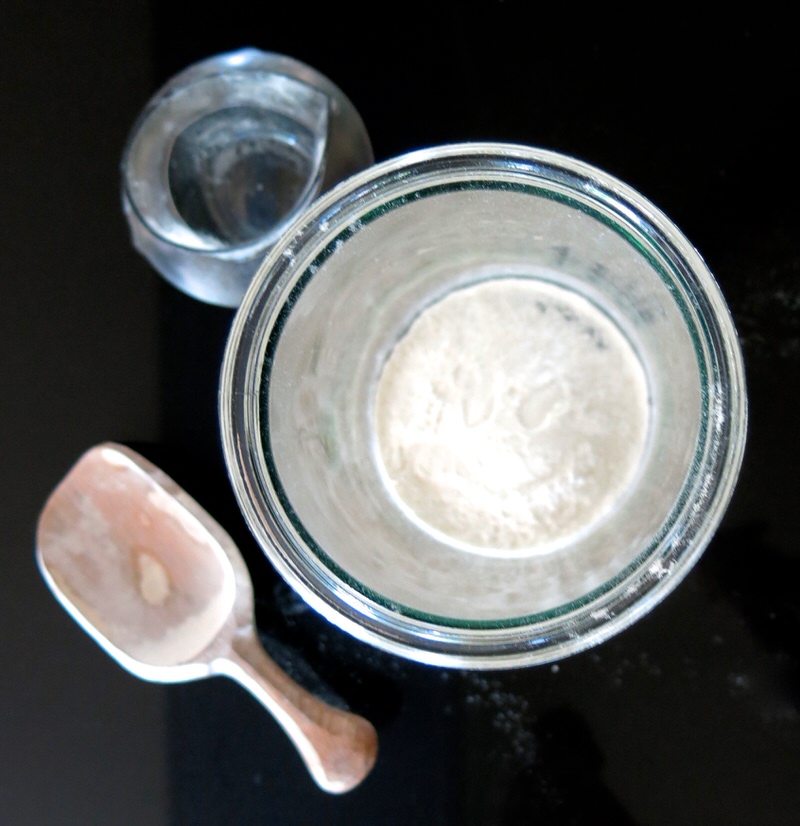
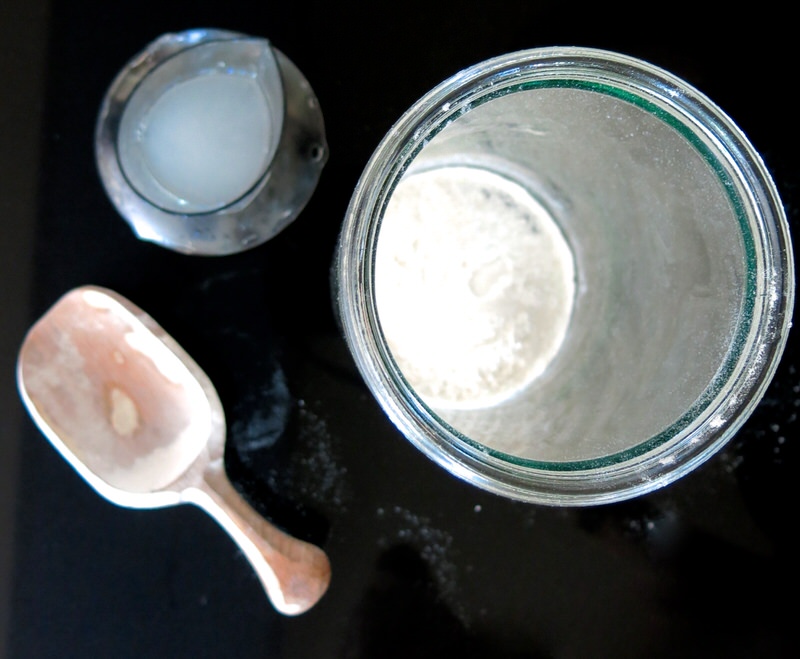
The simplest things are thoughtful. The scoop is handmade by a Ballymaloe artisan. The 1.5L Kilner Jars Kaelin uses are made in the UK and used at the Ballymaloe Cooking School. I used my Weck jar as The Bay was out. Yup. I actually went to buy a couple, and they are still on my list.
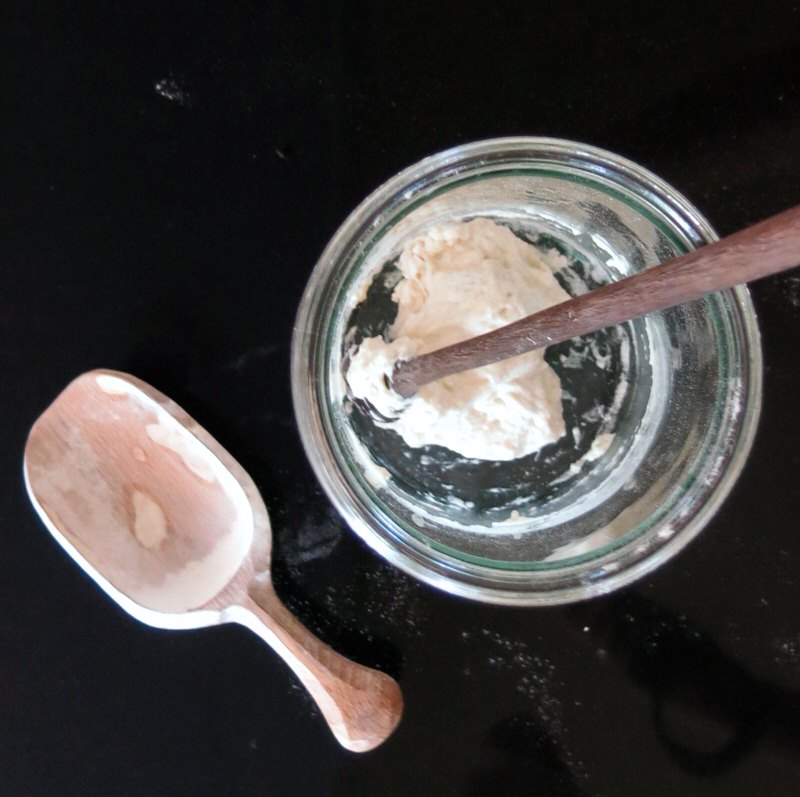
The flour is hand-picked: organic multi-purpose unbleached flour grown close to Edmonton and milled at Highwood Crossing. Fifty grams with the same amount of tap water. That was a bit of a surprise, but definitely provides a taste of place. I used my long ebony tasting spoon by Brad Bernhart at Earlywood. Love hand-hewn products when working with my hands.
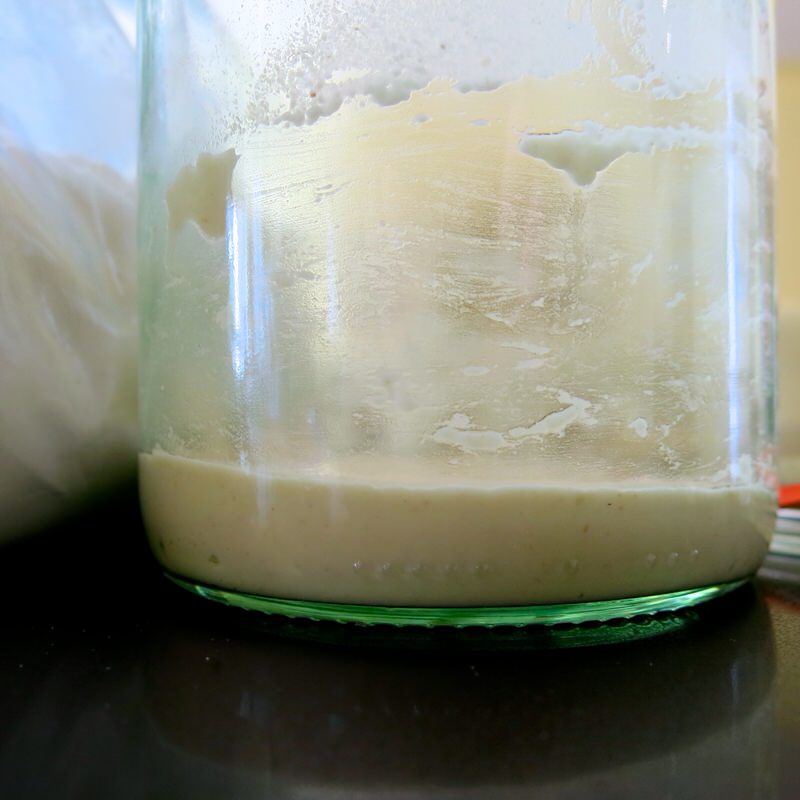
And thus it is. Day One Sourdough Starter is mixed and ready to grow. Flour and water.
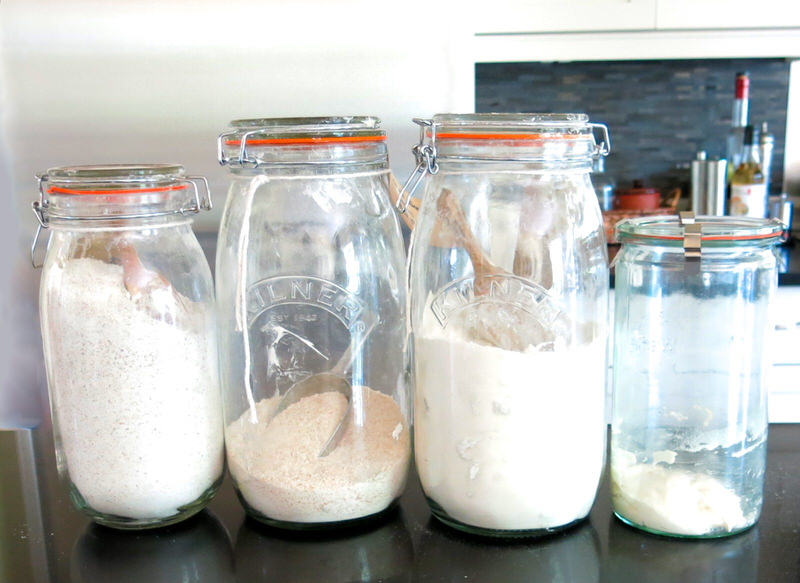
Lined up beside Kaelin’s flours: GFG Rye, GFG Red Fife, unbleached HWC Flours. The end: Day One Sourdough Starter.
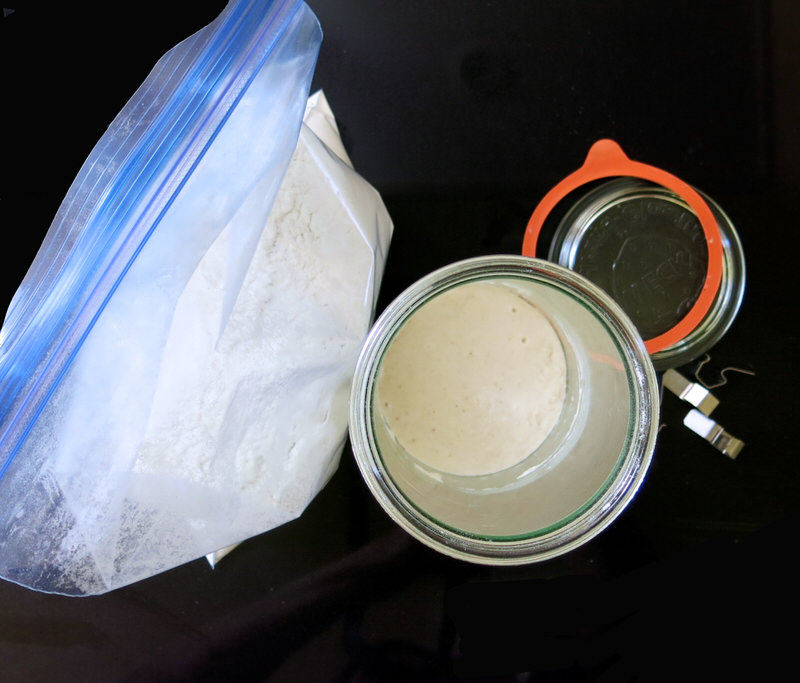
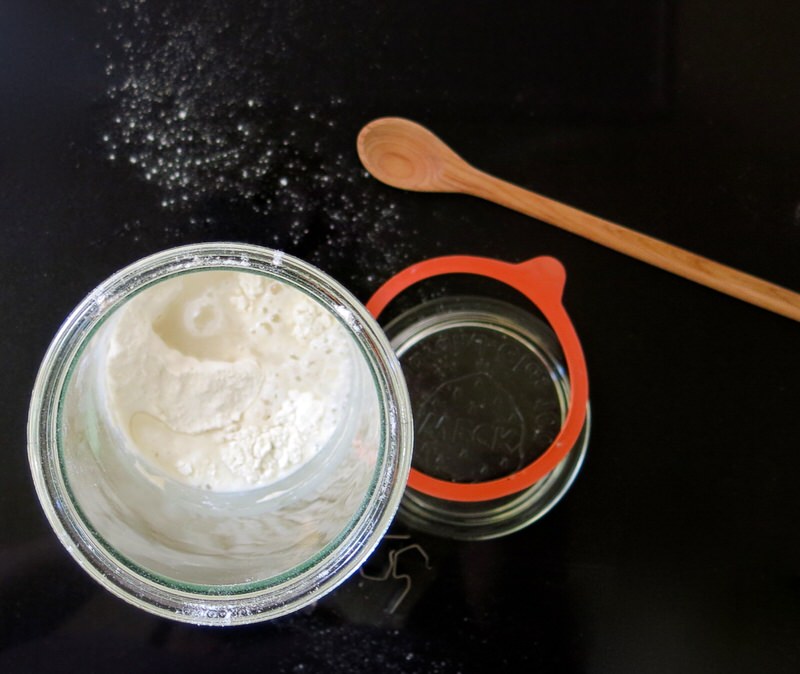
Day Two to Day Seven (or up to Day Ten): Repeat the process about the same time every day.
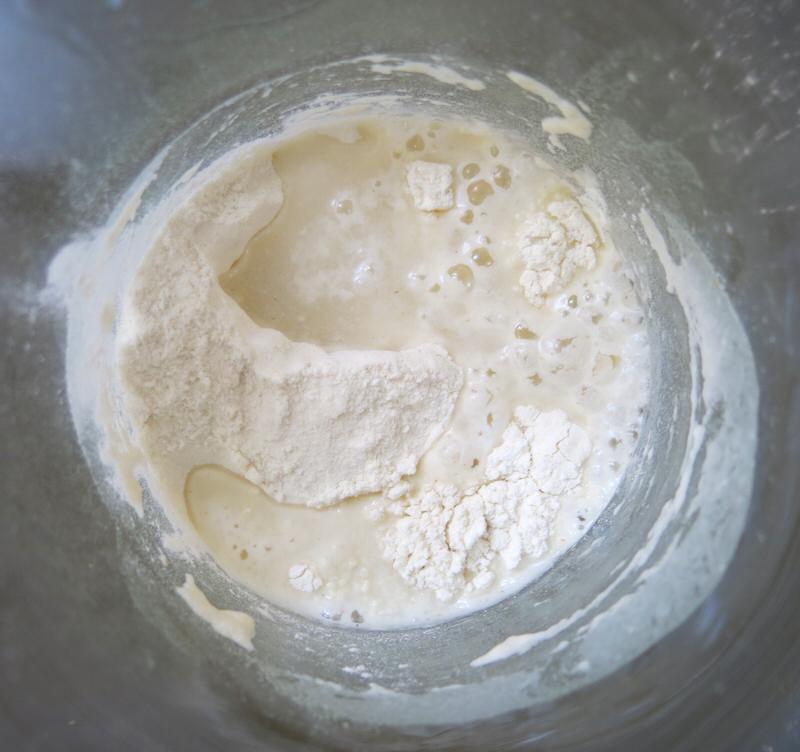
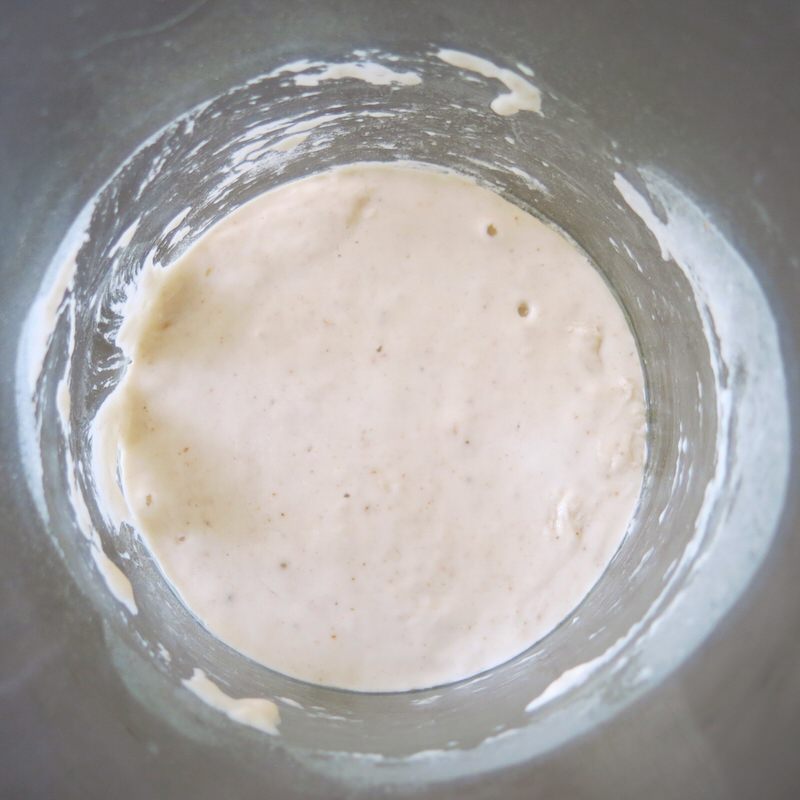
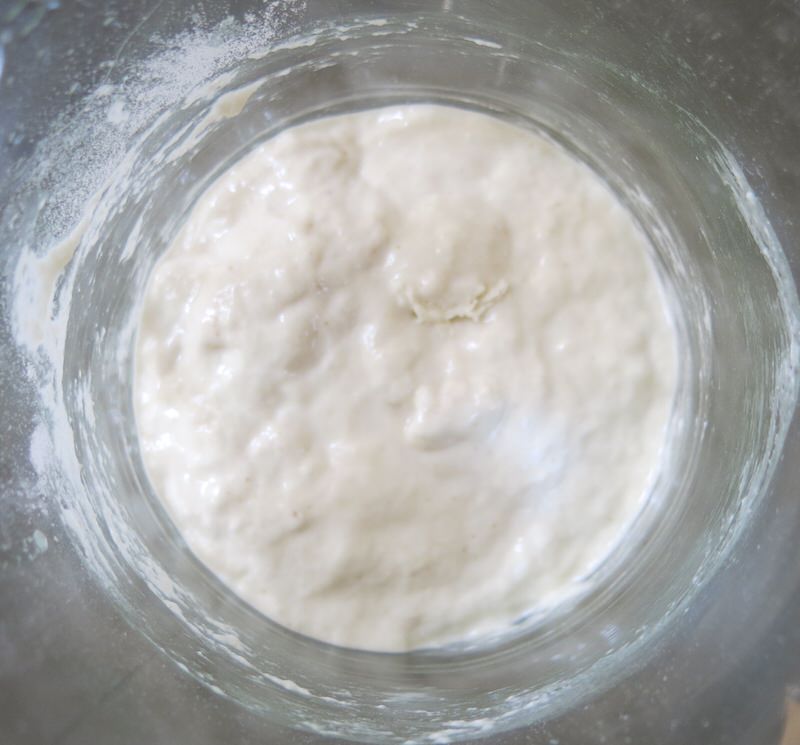
Look at that happy sourdough starter.
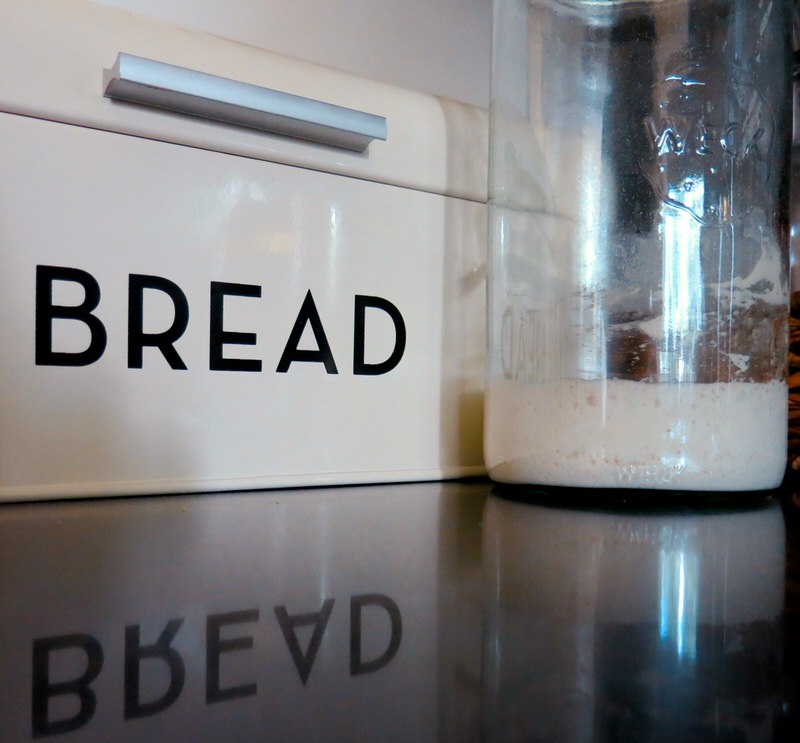
I was new to starters and didn’t realize how happy that sourdough starter was. I am one of those that learn best from making really big mistakes. Oh, I read, and practice and work with mentors. But, no matter how nurturing and inspirational the mentor (and Kaelin is all that), it seems mistakes still happen. For me, it was lack of experience. I had almost a litre full of starter on Day 10, had been away, and thought I should start again as it was so bubbly “and happy”. I threw it all out and started again. It did float, but it was quite runny. Kaelin had told me it was likely the temperature as it was one of the hottest Junes we’d ever had and that would affect the viscosity. She said, “Don’t worry!” I thought, “Hmmm. Best start fresh to be sure.”
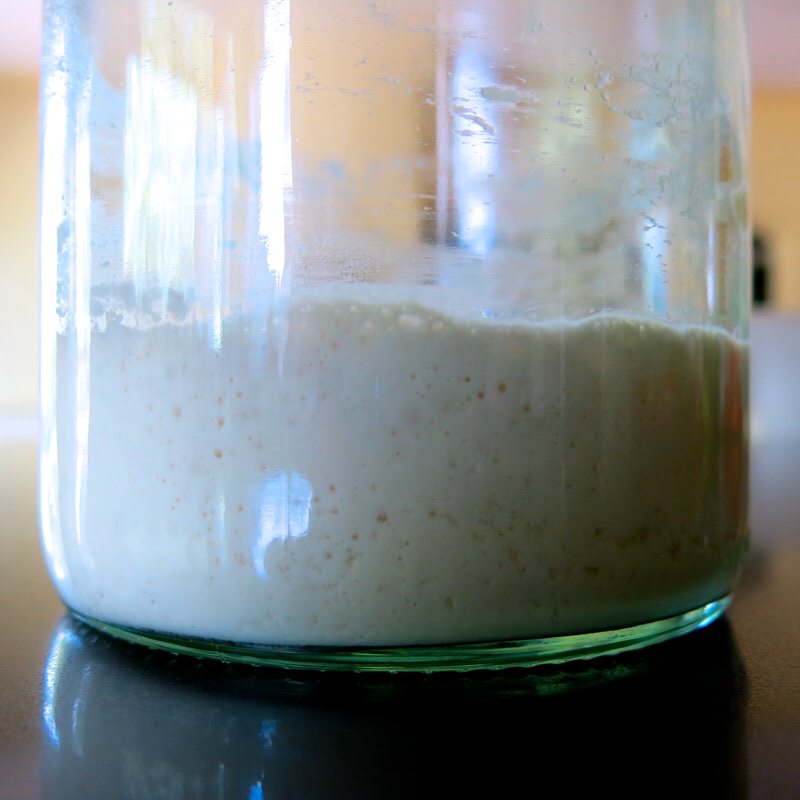
I started again. Same thing happened, but I took her advice this time as I knew I was doing everything right.
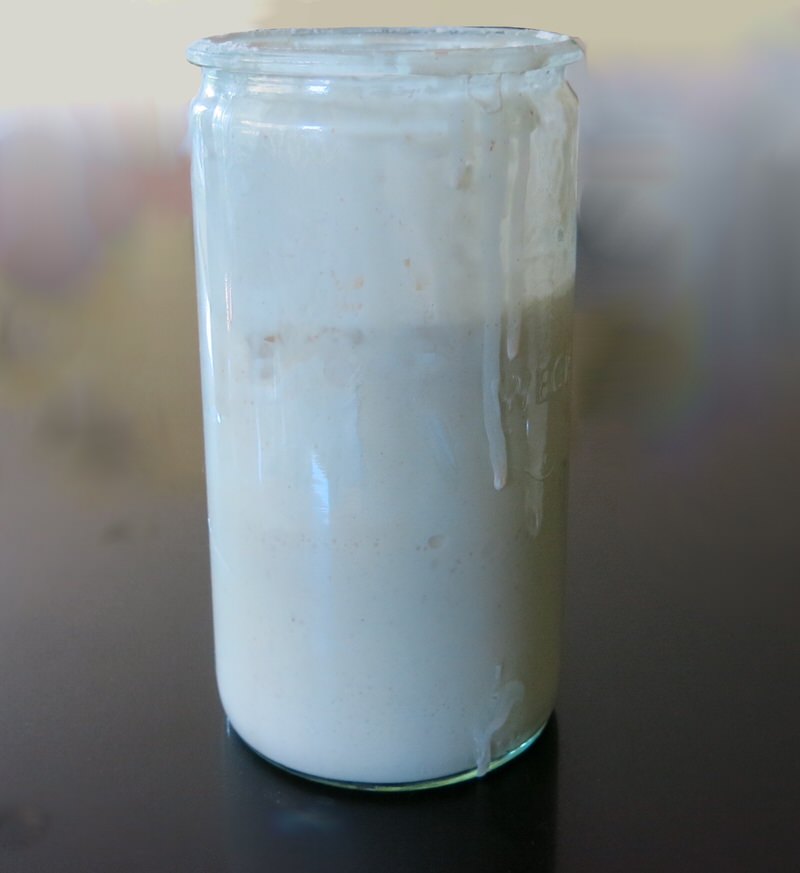
On day seven, you fill a jug with water and drop a tablespoon of sourdough starter into it about two hours after giving it a feed. If it floats, you pop it in the fridge and it is ready to be made into a sponge. If it sinks, keep it out and feed it again. Do the Float Test again two hours later on day 8, 9 and 10, until it floats. Day 10, mine floated like a plump little puppy. It was thicker as I had refrigerated it a night or two, per Kaelin’s advice and was quite proud when she praised my starter and told me how surprised she was that it was so healthy. “Ah! I am getting to know you, “Whittaker the Second”. I know what you look like when you are healthy and happy. I am learning how to feed you and coddle you!”
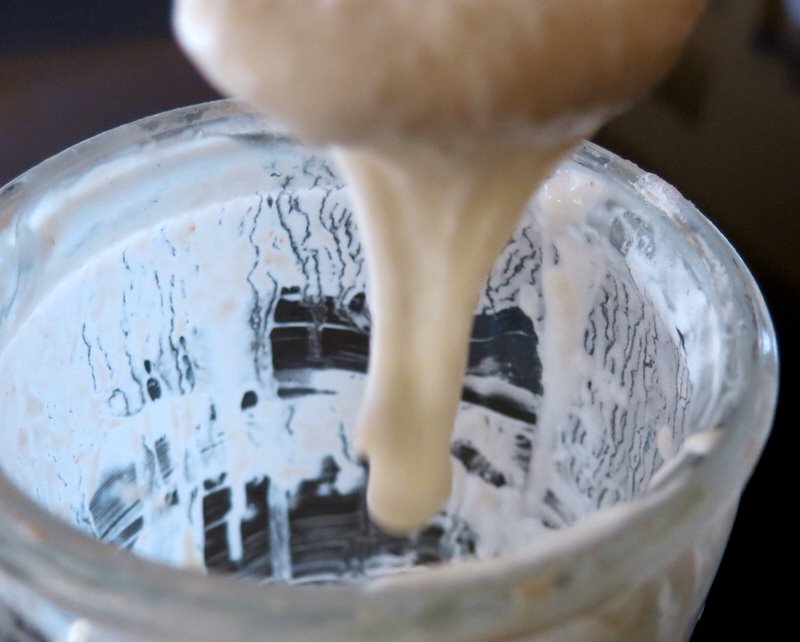
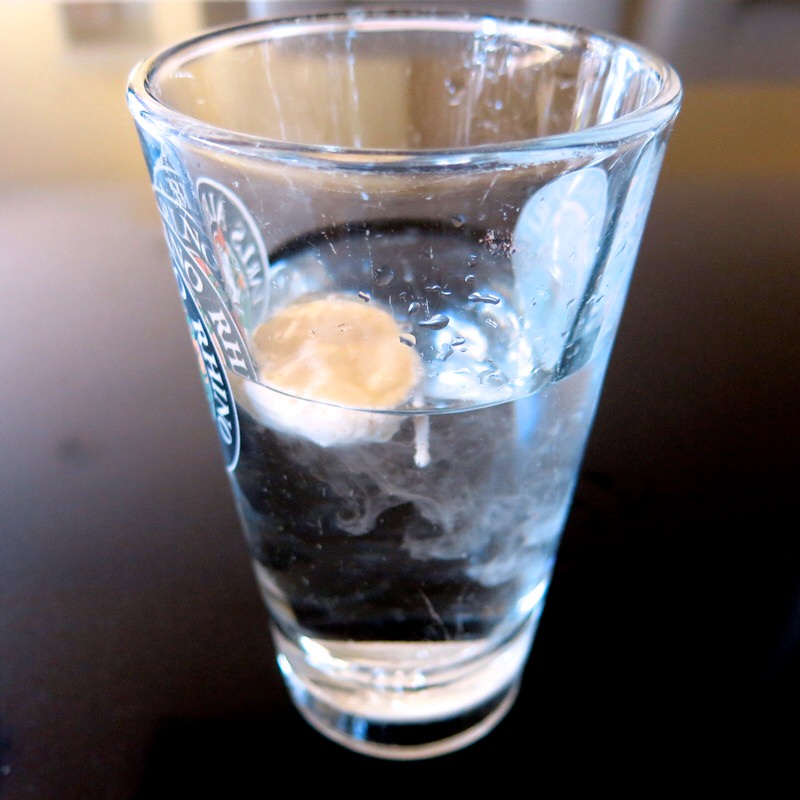
Finally. The day has come. Kaelin is back over and together we are going to build the sponge and make the dough, proof it and bake a loaf. I am so eager and unknowingly, so completely unprepared. Getting to know one’s starter is an essential first step of, oh, so many more before one can triumphantly announce, “I did it, mom! Look! I did it!” I haven’t even told Kaelin, yet. But, if you follow along, you will learn that for me it was a long and winding road, but I finally did it. And yes, it was worth it.
Thank you, Ms. Kaelin Whittaker! You are my Sourdough Bread Making Hero.
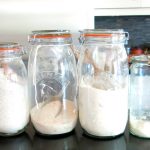
Real Bread Alberta Sourdough Starter
This is the first in a series of three recipes for Sour Dough with Kaelin Whittaker. Starter Recipe and the importance of the flour.
Ingredients
- Highwood Crossing’s All Purpose Flour 2 kg to start; available at Blush Lane
Instructions
Materials
-
Kaelin bakes her bread in a Lodge Cast Iron Combo Cooker; they are $60 OR you can use a dutch oven.
-
A 1L or 1.5L Kilner Jar available at The Bay for the Starter
-
Small banneton proofing basket, tea towel, D-shaped dough spatula
-
Additional Flours: Gold Forest Grains Red Fife Wheat Flour: 1.6kg to start (smallest amount sold); available at Strathcona Farmers’ Market or Bon Ton Bakery AND Gold Forest Grains Rye Flour: 1.4kg (also smallest available amount)
-
Organic wheat germ and high-quality sea salt for the sourdough bread making
Making the Starter Day 1 to 7
-
Carefully measure 50 grams Highwood Crossing Organic Unbleached Flour and 50 grams tepid water into the 1.5L Kilner Jar; mix well to combine
-
Place lid securely on jar, set in cool, dark location on counter; repeat process at close to the same time every day for 7 days.
Day 7 to 10: Float Test
-
Fill a transparent glass with water; place a good teaspoon of starter into the water
-
If it floats, the starter is active and ready; refrigerate
-
If it doesn't float, continue to feed it for three more days, and test again
Starter Floats
-
Starter is placed in the fridge and ready to be used to make sour dough bread. Step Two follows: Making the Sponge.
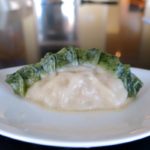
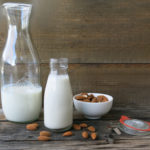
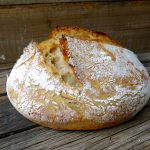
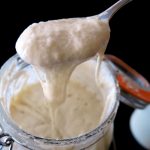
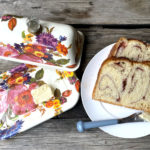
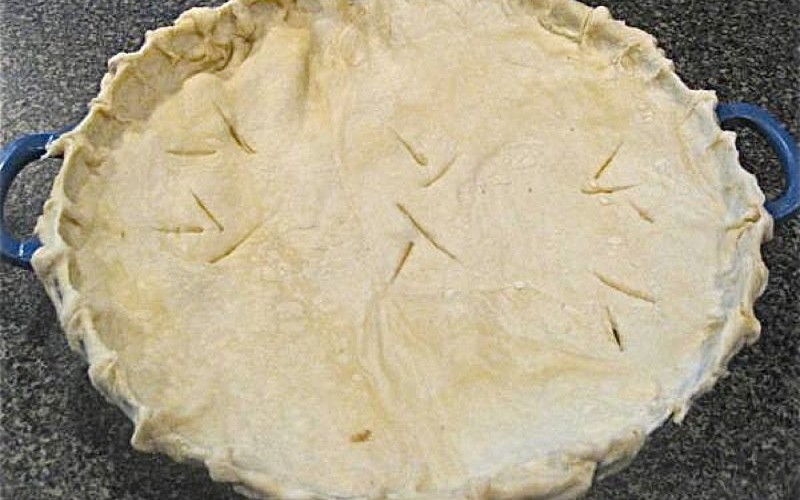



Great to see you getting involved in Sourdough September. However ‘sourdough does not require much gluten’ could be misleading. Sourdough loaves are often made with high gluten flours. While some people who find they can’t eat other types of loaf report they can eat genuine, long fermented sourdough, not all can. People with coeliac disease should avoid eating any gluten and many people with wheat/gluten allergies or intolerance can’t even eat genuine sourdough, either.
Thanks, Chris. I think we’re both saying the same thing. 🙂 great clarification.
Valerie
Hi Valerie,
Fabulous article! I’m so glad to see that I am not the only one that isn’t perfect! While reading this article, I could just visualize the fun that you and Kaelin were having in the kitchen, wonderful! I have a question for you, did you not discard most of your sourdough starter each day? It sounds as though you just kept adding to the starter daily without removing any of it. Most recipes I have read indicate that you must discard most of your starter before the daily feeding. Am I missing something?
Hi Shelley,
I don’t have that same experience. Before the bread is made – to create the sponge – half of the starter is then removed. Read all of the articles in order. But, to create the first starter, using only 50 grams water and flour – which is very little, removing half each time would take almost 3 weeks to get your first starter. In any case, it is certainly not what they do at Ballymalloe Cooking School in Ireland. Richard Bertinet doesn’t do it that way (French) and niether was it this way at La Cordon Blue. So, if you have been taught that way – to me that means there are simply a myriad of ways to made the starter. Have you made it that way?
🙂
Valerie
I am about 1 month in of attempting to grow and nurture my sourdough starter, but it is not rising like it’s supposed to…I might start from scratch and try your method of small feedings without discarding the majority of the starter and see if I have better luck. Once my starter is happy and healthy (7-10 days) and I’m able to use it to make my bread, do I just feed and repeat (small feedings every 12 hours) until I have enough starter/sponge to make more bread next week? Or do I put the starter in the fridge and give it bigger feedings once a week?
Hi Joanne,
I did actually answer all of those questions in my series of articles if you read through them.
It isn’t an easy task, remembering to take care of that starter, to feed it, to get into the rhythm of it all. You have to be passionate about the process and able to keep up with the bread eating to make it all work. We are only 2. I was passionate and committed, but we just could not eat all of the bread and at this phase of my life, travel too much to feed it when needed, etc. So, for me, the learning experience and the several months with my starter and this incredible bread was unforgettable. I will be doing it again when more stationary, and will then have to read over my own articles again, too!
Hugs,
Valerie
Valerie,
I enjoyed reading about your making of diastatic malt powder-which lead me to read about sourdough starter. I find your blog hard to navigate. The link at the bottom of the malt article supposed to lead to sourdough starter-did not. I put in in the search bar and found it. However the physical layout while reading is so full of ‘ads’ it is very hard to follow the narration. It seems almost like some is missing. Therefore I found it incredulous that the lady asking questions you could have simply answered was told ”read my articles in order-I already answered that.” Not only do I find that somewhat rude-but when one has such a dysfunctional layout it behooves you to be a bit more accommodating to your readers..BTW there are many other traditional fermenters of sourdough who do instruct to discard some of the starter as you do your daily feedings. I have been reading about this for yrs-not having done it yet-so YOURS was the first ever article I have seen where they did NOT do this. Some being amish, Russian, german..etc. It is interesting though. It makes it kind of confusing but also makes it seem like it must be pretty hard to do it wrong if either way works.
Dear Kim,
I am with you on the hard to navigate through the ads part right now. That will change. I have currently signed up with a new ad company and the first 60 days I have to comply with a myriad of ads. After that, I regain control. Apologies! I will check the link. Sorry it didn’t work and glad you knew to go to the search bar, so many don’t. I take pride in how organized and ad-free every post is – as a rule. They will be ad-free again soon. Of course, there will be ads in the sidebar and header and footer, but the post itself will be your soft place to land. Great feedback, too. Thank you!
Valerie
Your sourdough starter looks kind of whiteish on your pictures, I recommend using mix of whole wheat flour with dark rye flour, this will not only speed up the fermentation process of your starter but it will also give your bread more flavours and old fashioned taste as well. Here in Germany it’s a mandatory for us to use dark rye flour in our starter but it’s also our tradition we share over years.
Hi Paul,
Interesting. This specific post was a recording of a specific technique used in our city by Kaelin Whittaker.
🙂
I have other starters on my site and one great one with rye.
Thanks so very much!
YUM!
🙂
Valerie
i have read through all three articles (starter, sponge and bread) and I still am confused. When I have the starter pass the float test – it goes in the fridge. I am good until this point – and this is when the questions start
1) how long is the starter good for in the fridge?
2) do I have to feed the starter while in the fridge? if so, how much and when?
3) how do I keep my starter “alive”
I actually have similar questions to Joanne and read through all of the articles and couldn’t find an answer… am I missing it?
I have asked Kaelen Holly, and these are her answers:
1) how long is the starter good for in the fridge?
Forever as long as you take care of it based on the answer to question 2.
2) do I have to feed the starter while in the fridge? if so, how much and when?
Yes, every 2 – 3 weeks. 50g of water and 50g of fresh flour
3) how do I keep my starter “alive”
See above
Hope this helps!
🙂
V